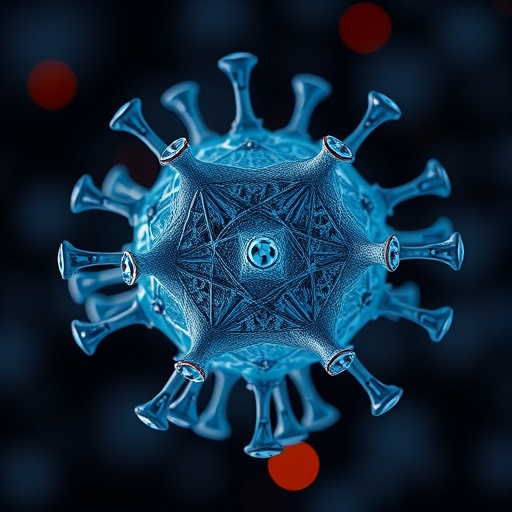In recent years, the field of medical imaging has witnessed a transformative shift, largely propelled by the advancements in artificial intelligence (AI) and machine learning technologies. Among the many branches of medical imaging, the automatic measurement of anatomical structures has gained significant attention, especially concerning conditions affecting children. A critical area that is currently under scrutiny is the automatic measurement of adenoid size through lateral neck and head radiographs, a task traditionally reliant on the expertise of radiologists. The recent study by Hao et al., published in Pediatric Radiology, delves into the feasibility of using deep learning algorithms to streamline and enhance this process.
Adenoid hypertrophy is a common affliction among children, often leading to various health complications, including obstructive sleep apnea, recurrent ear infections, and impaired speech development. Accurately assessing adenoid size through lateral neck X-rays is crucial for diagnosis and subsequent treatment planning. Historically, this process has been cumbersome, time-consuming, and subjective, as it requires precise interpretation and measurement by trained professionals. However, the introduction of deep learning methodologies promises to rectify these limitations.
Deep learning, a subset of machine learning, utilizes multi-layered artificial neural networks to analyze vast amounts of data and recognize patterns. This capability makes it particularly suited for image analysis, where it can learn to identify and quantify anatomical features based on training datasets. By utilizing convolutional neural networks (CNNs), researchers can create a model that accurately learns to detect the contours of adenoids from radiographs. The study conducted by Hao et al. rigorously explores this application, aiming to develop a fully automatic measurement system that minimizes human error and enhances measurement consistency.
The investigative process involved the meticulous collection of lateral neck radiographs from pediatric patients. These images formed the training dataset for the deep learning algorithms, allowing the model to learn various characteristics relevant to adenoid size. Through a systematic approach, multiple algorithms were tested for accuracy and reliability, ensuring the chosen model would perform well in practical settings. The research team also established a robust validation framework to assess the model’s performance against conventional measurement techniques used by radiologists.
One of the significant findings of this study was the model’s ability to demonstrate accuracy that rivals that of experienced radiologists. This groundbreaking result indicates that deep learning can potentially replace traditional methods for measuring adenoid size, leading to quicker diagnosis and treatment initiation. By automating this process, healthcare professionals can allocate their time and expertise to other crucial aspects of patient care, optimizing clinical workflows.
Moreover, the feasibility of such technology extends beyond mere automation. The likelihood of discrepancies in measurement due to human error is substantially reduced, leading to improved patient outcomes. In practice, this means a lower rate of misdiagnosis and unnecessary medical interventions, ultimately benefiting pediatric patients. With the prevalence of pediatric health issues related to adenoid size, the implications of this technology are profound.
One cannot overlook the financial implications as well. The cost-effectiveness of integrating AI into medical imaging practices is becoming increasingly apparent. Automating the measurement process can significantly save on costs incurred by prolonged expert analysis while simultaneously increasing efficiency through faster turnaround times for radiographic assessments. This aspect is particularly significant in resource-limited settings, where access to specialized medical expertise may be restricted.
Furthermore, the study excels in addressing ethical considerations related to AI applications in healthcare. The researchers emphasized transparency in the algorithm’s decision-making process. By ensuring that the model could provide explainable insights, they aimed to bolster confidence among clinicians when leveraging technology in patient care. This transparency is critical in fostering trust in AI-driven solutions, ensuring that they complement rather than replace the expertise of healthcare professionals.
The ever-growing demand for pediatric diagnostic services necessitates innovative solutions. As healthcare systems worldwide continue to grapple with increasing patient volumes and limited resources, studies like that of Hao et al. demonstrate how deep learning can align with contemporary challenges to improve services. By harnessing the power of AI, the healthcare industry can redefine its approach to pediatric radiology, ultimately leading to better patient care.
In summary, the feasibility study conducted by Hao and colleagues marks a significant leap forward in the integration of AI within the realm of pediatric radiology. Their research establishes a strong foundation for further explorations into the automatic measurement of other critical anatomical features across diverse clinical contexts. As technology continues to advance, particularly in deep learning, the potential for automatic measurements in anatomy will likely expand, thereby revolutionizing diagnostics in multiple medical fields.
The overarching takeaway from this study is a beacon of hope for the future of pediatric healthcare. By pioneering automated processes for adenoid measurement, the research team opens avenues toward enhanced diagnostic accuracy, efficiency, and overall patient care. With deep learning technology evolving rapidly, conducting subsequent studies to validate and refine these models will be crucial. The journey toward fully automated diagnostics is well underway, potentially reshaping the landscape of medical imaging and pediatric healthcare as we know it.
As we anticipate additional findings and developments in this area, the promise of AI-driven solutions in medicine is both exciting and encouraging. Their application stands not only to simplify processes but to drastically improve health outcomes for children everywhere. With this newfound capability, the future of radiological evaluations appears to be on the verge of a transformative breakthrough, harnessing technology in serving society’s most precious asset—its children.
Subject of Research: Automatic measurement of adenoid size on lateral neck and head radiographs using deep learning.
Article Title: Feasibility study of fully automatic measurement of adenoid size on lateral neck and head radiographs using deep learning.
Article References:
Hao, D., Tang, L., Li, D. et al. Feasibility study of fully automatic measurement of adenoid size on lateral neck and head radiographs using deep learning.
Pediatr Radiol (2025). https://doi.org/10.1007/s00247-025-06332-0
Image Credits: AI Generated
DOI: https://doi.org/10.1007/s00247-025-06332-0
Keywords: Deep Learning, Medical Imaging, Pediatric Radiology, Adenoid Hypertrophy, AI Technology




